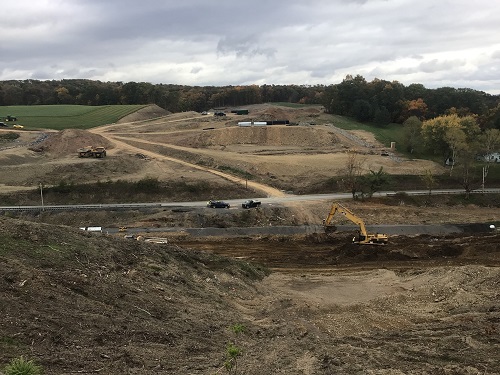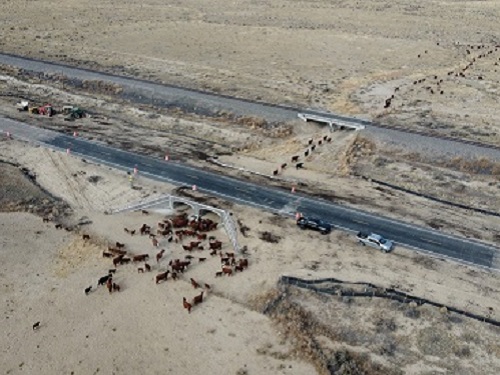The Pennsylvania Invasive Species Council or ISC is preparing to pilot test an invasive species management program this summer – and the Pennsylvania Department of Transportation is one of several state agencies on tap to play a key role in that pilot test.
[Above image by PennDOT]
The program is built around findings from the first statewide survey of impacts from invasive plants, insects, pathogens, and animals, ISC conducted in late 2022 – the Pennsylvania Invasive Species Impacts Survey.
“A biodiverse native ecosystem provides the natural resources that are essential to our lives, from agricultural food production to outdoor recreation and fishery, timber, and other industries,” explained Rich Negrin, acting secretary for the Pennsylvania Department of Environmental Protection, in a statement.
He added that the ISC believes a statewide program is necessary to respond to growing number of invasive species in Pennsylvania – including the spotted lanternfly, mile-a-minute vine, Japanese stiltgrass, barberry shrub, zebra mussels, and many others.
The pilot will bring together expertise from local and state government, industry, community, and academic organizations to create a Partnerships for Regional Invasive Species Management or “PRISM” program.
The Council and the Pennsylvania Association of Conservation Districts or PACD will partner to pilot-test a small-scale version of a PRISM program in 13 northwest counties in July.
Using $210,000 from the U.S. Department of Agriculture Forest Service, PACD plans to conduct on-the-ground projects to remove invasive species and conduct educational outreach to help prevent the introduction of invasive species. In addition, PACD will develop a strategic plan identifying priorities and committed partners for the region – including PennDOT.
“PennDOT has worked with federal, state, and local partners to encourage native plant growth and target invasive species in our right of way,” noted Mike Carroll, acting PennDOT secretary. “We look forward to continued partnership through this council to address this statewide challenge.”
Other state departments of transportation are also engaged in efforts to eradicate a variety of invasive species in their regions to improve protections for native plant and animal life, as well as encourage pollination efforts.
For example, the Kentucky Transportation Cabinet recently began cranking up its annual weed control program to keep a dozen unwanted and noxious weeds from encroaching on the bluegrass state’s transportation infrastructure.
Meanwhile, in November 2022, the Illinois Department of Transportation recounted in a blog post how it changed its mowing practices over the years to better protect roadside landscapes that are vital to pollinators and native planet life.
The agency has adopted mowing policies to protect the habitat and migratory patterns of the monarch butterfly and other pollinators that use it as a food source. That policy allows for mowing of the state’s roads in a four-year rotation during the summer.
Finally, in October 2022, ecologists at Idaho State University began working with the Idaho Transportation Department to turn state roadsides into veritable “Swiss army knives” of vegetation so they are both more fire-resistant and more welcoming to pollinating insects. They are working with three different types of ecosystems, figuring out how to make the land more hospitable to native plants and less so for invasive weeds.


